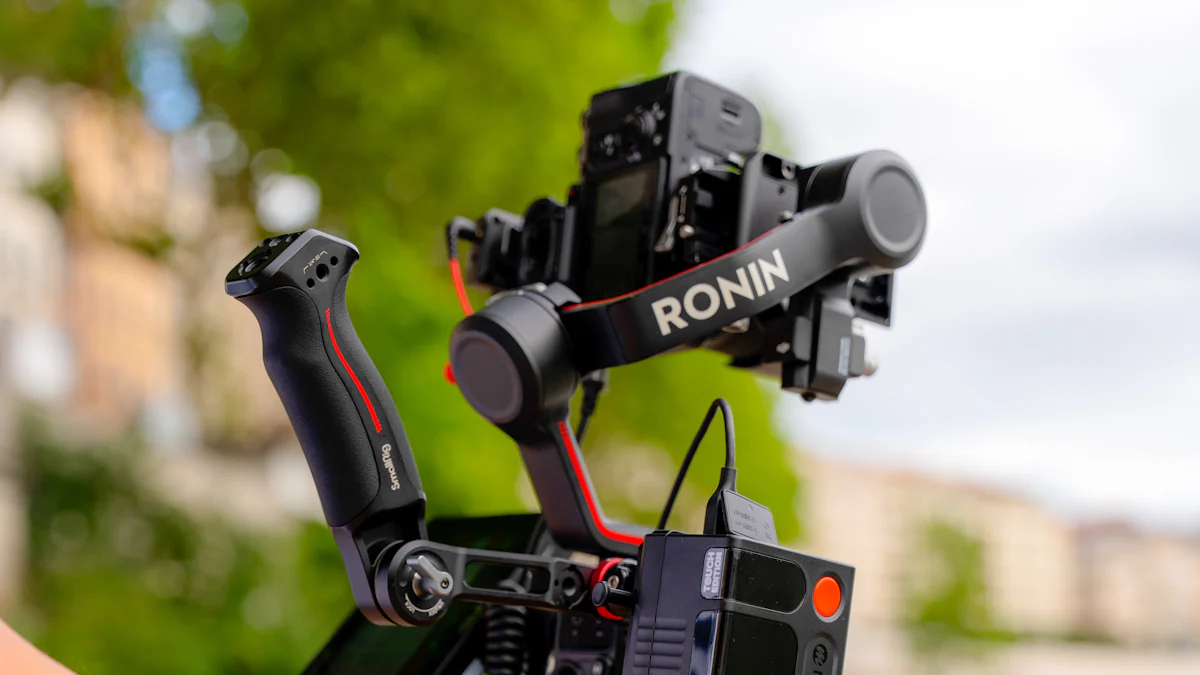Guide to Using ADXL357BEZ in Motion Sensor Applications and Platform Stabilization

The ADXL357BEZ, a high-performance MEMS accelerometer from ADI, is essential for platform stabilization systems and motion sensor applications. This device excels in measuring acceleration, tilt, and vibration, making it indispensable for various industrial and consumer applications. Its low noise and drift characteristics ensure precise measurements, even in high-vibration environments. Motion Sensors Accelerometers like the ADXL357BEZ enhance safety and efficiency across sectors, from robotics to aerospace. For more detailed specifications, visit https://www.alldatasheet.com/datasheet-pdf/pdf/128.
Understanding ADXL357BEZ for Platform Stabilization Systems

Features of ADXL357BEZ
The ADXL357BEZ from Analog Devices stands out in the realm of MEMS Accelerometers. This device offers high-performance specifications that cater to both industrial and consumer needs. It provides a bandwidth range from DC to 3.6 kHz, ensuring precise motion sensing. The MEMS capacitive accelerometer performance is enhanced by its low Noise Density, which is crucial for applications requiring accurate measurements.
High-performance specifications
Analog Devices designed the ADXL357BEZ with a focus on high precision. The device features a 16-bit resolution, allowing for accurate measurement of both dynamic and static acceleration. Its low bias drift over temperature ensures long-term stability, making it a suitable MEMS Accelerometer for environments with high vibration. The MEMS technology used in this device minimizes error and enhances reliability.
Sensitivity and accuracy
The ADXL357BEZ excels in sensitivity and accuracy. Its low Noise Density and minimal bias drift contribute to its ability to deliver precise data. This device is ideal for applications that demand high accuracy, such as platform stabilization systems. The MEMS capacitive design ensures that the device maintains its performance even in challenging conditions.
Applications in Motion Sensors Accelerometers
The versatility of the ADXL357BEZ makes it a preferred choice in various applications. Its robust design and reliable performance cater to both industrial and consumer sectors.
Industrial applications
In the industrial sector, the ADXL357BEZ finds use in applications like structural health monitoring and seismic imaging. Its ability to measure tilt and vibration accurately makes it indispensable in these fields. The device's high bandwidth and low drift characteristics ensure that it performs well under demanding conditions.
Consumer electronics
For consumer electronics, the ADXL357BEZ offers solutions for devices requiring precise motion sensing. Its compact size and low power consumption make it suitable for portable devices. Analog Devices MEMS accelerometers like the ADXL357BEZ enhance the functionality of gadgets by providing accurate motion data.
Role in Platform Stabilization
The ADXL357BEZ plays a crucial role in platform stabilization systems. Its ability to provide accurate orientation measurements ensures stability and control in various applications.
Importance in aerospace
In the aerospace industry, the ADXL357BEZ is vital for maintaining stability in aircraft. Its high precision and low error rates make it an essential component in inertial measurement units (IMUs) and attitude and heading reference systems (AHRSs). These systems rely on the device's accurate data to ensure safe and efficient operation.
Use in robotics
Robotics also benefits from the ADXL357BEZ. The device's ability to measure tilt and vibration accurately aids in the development of stable and responsive robotic systems. Its MEMS technology ensures that robots can operate effectively in dynamic environments, minimizing Typical Application Error.
Implementing ADXL357BEZ in Inclination and Stabilization Applications

The ADXL357BEZ, a high-performance MEMS Accelerometer, plays a crucial role in inclination and stabilization applications. Its ability to measure tilt and vibration accurately makes it indispensable in various fields. This section explores the integration techniques and calibration procedures necessary for implementing this accelerometer effectively.
Integration Techniques
Hardware integration
Integrating the ADXL357BEZ into hardware systems requires careful consideration of its specifications. Engineers must ensure that the accelerometer is securely mounted to minimize noise and maximize accuracy. The device's small form factor allows for easy incorporation into compact systems, making it ideal for both static and dynamic environments. Proper alignment with the system's axis of measurement is essential to achieve precise inclination readings.
Software considerations
Software integration involves configuring the ADXL357BEZ to communicate effectively with the system's processor. Developers must write code that accurately interprets the accelerometer's output data. This includes setting appropriate sampling rates and filtering techniques to reduce noise. The MEMS technology in the ADXL357BEZ ensures reliable data transmission, which is vital for real-time stabilization applications.
Calibration and Testing
Calibration procedures
Calibration is a critical step in ensuring the accuracy of the ADXL357BEZ. Technicians must perform initial calibration to account for any biases or offsets in the accelerometer's readings. This process involves placing the device in known orientations and adjusting its output to match expected values. Regular recalibration is necessary to maintain long-term stability, especially in high-vibration environments.
Testing for accuracy
Testing the ADXL357BEZ involves verifying its performance under various conditions. Engineers conduct tests to assess the accelerometer's response to different inclination angles and vibration levels. These tests help identify any discrepancies in the device's output, allowing for adjustments to improve accuracy. The ADXL357BEZ's low noise performance and long-term repeatability make it a reliable choice for stabilization applications.
The ADXL357BEZ, along with its related models like the ADXL354 and ADXL355, offers superior vibration rectification and low noise performance. These features make it ideally suited for inclination sensing in both static and dynamic environments. By following proper integration and calibration procedures, users can harness the full potential of this MEMS Accelerometer in various stabilization applications.
Challenges and Solutions in Dynamic Environments
Common Challenges
Dynamic environments present unique challenges for the ADXL357BEZ accelerometer. Engineers must address these issues to ensure optimal performance.
Environmental factors
Environmental factors significantly impact the performance of the accelerometer. Temperature fluctuations can cause bias and offset errors, affecting tilt accuracy. High vibration levels introduce noise, which can distort sensor readings. These conditions require careful consideration during the design and implementation phases.
Signal interference
Signal interference poses another challenge. Electromagnetic interference (EMI) can disrupt the accelerometer's output, leading to inaccurate data. This interference often results from nearby electronic devices or power lines. Engineers must identify and mitigate these sources to maintain signal integrity.
Solutions and Best Practices
Implementing effective solutions and best practices can enhance the performance of the ADXL357BEZ in dynamic environments.
Mitigating environmental impact
To mitigate environmental impact, engineers should employ temperature compensation techniques. These methods adjust the accelerometer's output to account for temperature-induced bias and offset errors. Additionally, using vibration isolation mounts can reduce noise levels, improving tilt accuracy. These measures help maintain consistent performance across varying conditions.
Ensuring signal integrity
Ensuring signal integrity involves shielding the accelerometer from EMI. Engineers can use grounded enclosures or ferrite beads to minimize interference. Proper grounding and routing of cables also play a crucial role in reducing noise. By following these practices, engineers can enhance the reliability of the sensor's data.
The ADXL357BEZ, along with related models like the ADXL354 and ADXL355, offers robust solutions for dynamic environments. By addressing common challenges and implementing best practices, users can achieve accurate and reliable performance in various applications. These accelerometers excel in measuring tilt and vibration, making them indispensable in fields requiring high precision and stability.
The ADXL357BEZ from Analog Devices stands out as a versatile accelerometer, offering exceptional performance in motion sensing and platform stabilization applications. Its low noise and minimal offset drift ensure high tilt accuracy, even in challenging environments. The device's ability to maintain stability under varying temperature conditions makes it ideal for dynamic applications requiring precise inclination measurements.
Looking ahead, the demand for advanced sensors like the ADXL357BEZ will grow. Future trends indicate a rise in applications that require enhanced vibration monitoring and error reduction. As technology evolves, Analog Devices continues to innovate, providing solutions that meet the needs of diverse industries.
For those interested in exploring the capabilities of the ADXL357BEZ further, Analog Devices offers comprehensive resources and support. By delving deeper into this accelerometer's features, users can unlock new possibilities in their projects, ensuring optimal performance and reliability.
See Also
Simplified Guide for Integrating SN74LVC4245APW Sensors
AD620AN TV Power Applications: Step-by-Step Tutorial
In-Depth Look at MC9S12DJ256MFUE Specs in Auto Industry
Enhancing Robotics Performance with AEAT-8800-Q24 Integration
CALL US DIRECTLY
(+86)755-82724686
RM2508,BlockA,JiaheHuaqiangBuilding,ShenNanMiddleRd,Futian District,Shenzhen,518031,CN
www.keepboomingtech.com sales@keepboomingtech.com
